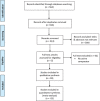Comparison of Intermittent versus Continuous Superior Venal Caval Oxygen Saturation Monitoring in Early Goal Directed Therapy in Septic Shock: A Systematic Review
- PMID: 36388075
- PMCID: PMC9649283
- DOI: 10.1055/s-0041-1729742
Comparison of Intermittent versus Continuous Superior Venal Caval Oxygen Saturation Monitoring in Early Goal Directed Therapy in Septic Shock: A Systematic Review
Abstract
Early goal directed therapy (EGDT) is a bundle of care (monitoring ScvO 2 and lactate along with clinical parameters and instituting therapy) that has shown to improve outcomes in patients with septic shock. We conducted a systematic review of clinical trials and observational studies to compare intermittent versus continuous monitoring of ScvO 2 . We did major database searches till August 2020. Hospitalized children (>2 months age) and adults with septic shock were included. The intervention was "intermittent ScvO 2 monitoring," and the comparator was "continuous ScvO 2 monitoring." The primary outcome is "all-cause mortality." Of 564 citations, 3 studies ( n = 541) including both children and adults were included in the analysis. There was no significant difference in the "overall/all-cause mortality" (two randomized controlled trials; 258 participants) between the "intermittent" and "continuous" ScvO 2 monitoring groups (relative risk [RR]: 1.00; 95% confidence interval [CI]: 0.8-1.24). However, a single observational study (283 participants) showed a significant increase in mortality in the intermittent group (RR: 1.46; 95% CI: 1.03-2.05). The GRADE evidence generated for "overall/all-cause mortality" was of "moderate certainty." To conclude, the present meta-analysis did not find any significant difference between "intermittent" and "continuous" ScvO 2 monitoring in patients with septic shock.
Keywords: ScvO 2 monitoring; goal directed therapy; mortality; sepsis; septic shock.
Thieme. All rights reserved.
Conflict of interest statement
Conflict of interest None declared.
Figures
References
-
- Jaramillo-Bustamante J C, Marín-Agudelo A, Fernández-Laverde M, Bareño-Silva J. Epidemiology of sepsis in pediatric intensive care units: first Colombian multicenter study. Pediatr Crit Care Med. 2012;13(05):501–508. - PubMed
-
- Sankar J, Dhochak N, Kumar K, Singh M, Sankar M J, Lodha R. Comparison of International Pediatric Sepsis Consensus Conference Versus Sepsis-3 Definitions for Children Presenting with Septic Shock to a Tertiary Care Center in India: a retrospective study. Pediatr Crit Care Med. 2019;20(03):e122–e129. - PubMed
-
- Hartman M E, Linde-Zwirble W T, Angus D C, Watson R S. Trends in the epidemiology of pediatric severe sepsis. Pediatr Crit Care Med. 2013;14(07):686–693. - PubMed
-
- Sepsis Prevalence, Outcomes, and Therapies (SPROUT) Study Investigators and Pediatric Acute Lung Injury and Sepsis Investigators (PALISI) Network . Weiss S L, Fitzgerald J C, Pappachan J. Global epidemiology of pediatric severe sepsis: the sepsis prevalence, outcomes, and therapies study. Am J Respir Crit Care Med. 2015;191(10):1147–1157. - PMC - PubMed
-
- Australian & New Zealand Intensive Care Society (ANZICS) Centre for Outcomes & Resource Evaluation (CORE) and Australian & New Zealand Intensive Care Society (ANZICS) Paediatric Study Group . Schlapbach L J, MacLaren G, Festa M. Prediction of pediatric sepsis mortality within 1 h of intensive care admission. Intensive Care Med. 2017;43(08):1085–1096. - PubMed
Publication types
LinkOut - more resources
Full Text Sources



